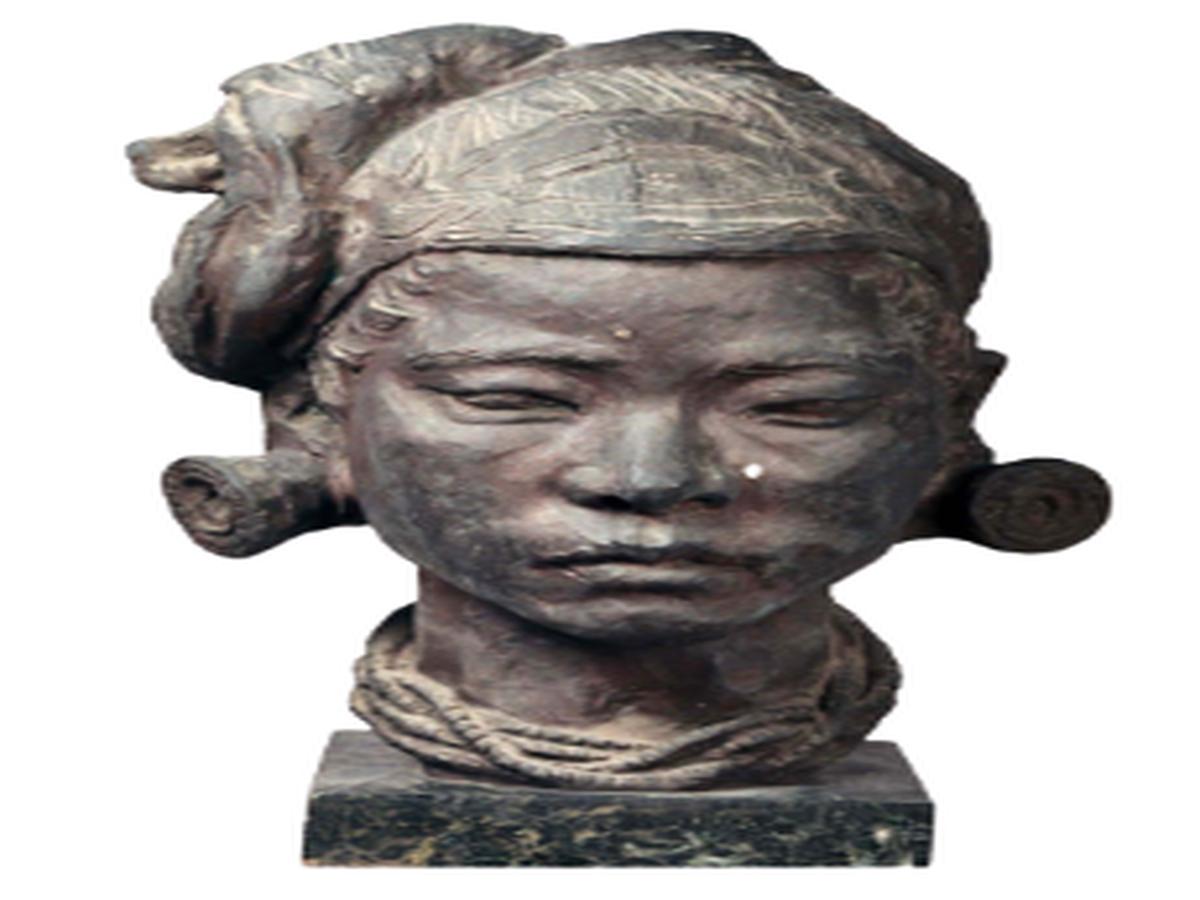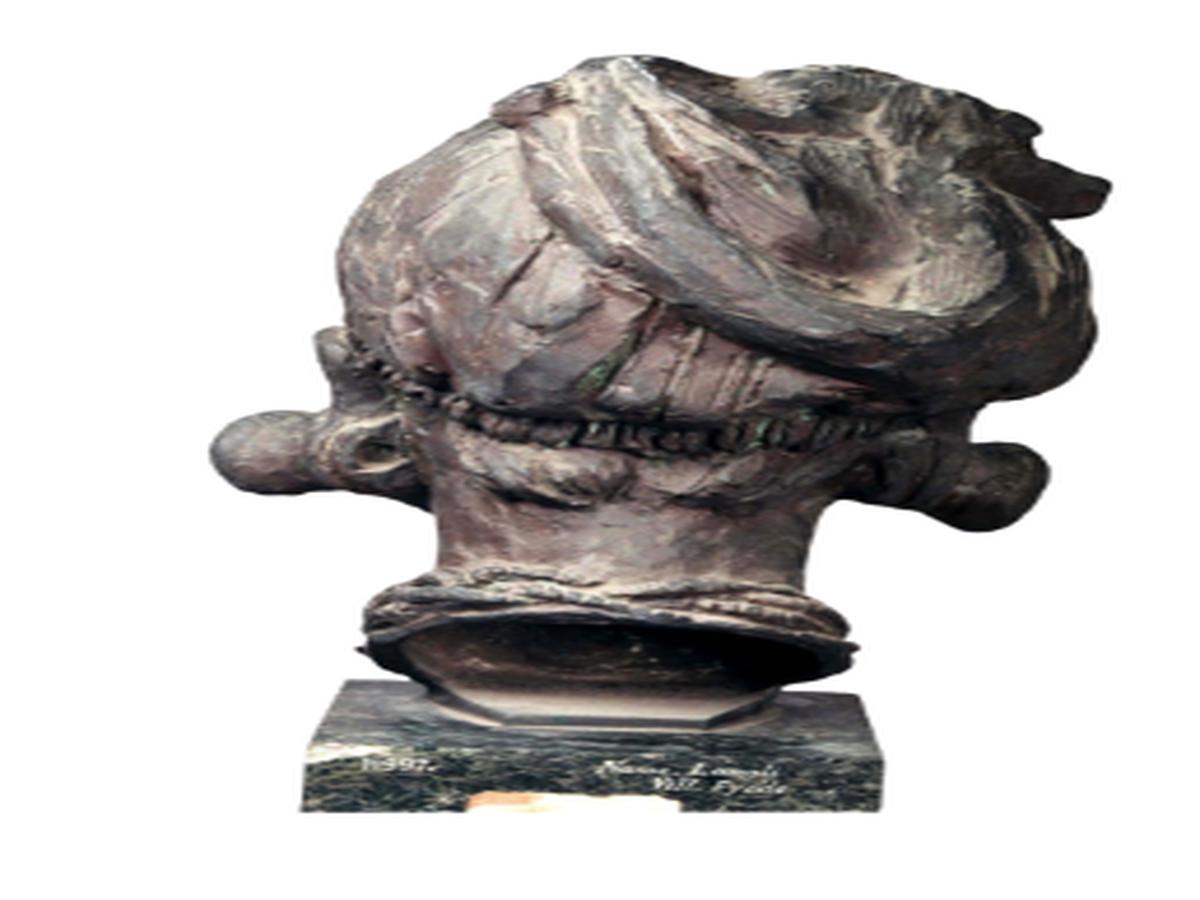State
Tribe Name
Art Type
short description
Presenting a Mishmi woman in a bronze showpiece one among the indigenous peoples of Arunachal Pradesh in the easternmost Fetch of India. This work of art shows the Mongoloid facial characteristics of the Mishmi tribe, essentially differentiating them by the eyes' epicanthic fold-a feature much appreciated in many tribes across the Eastern Himalayas. The bust stands elegant on a square granite pedestal, signifying both permanence and veneration.The way it is fashioned speaks to the naturalism of the culture. The hair is styled to one side according to traditional grooming practices. The large earrings with a necklace in beads suggest the tribe's taste in complicated yet meaningful decoration, often made of natural materials like bone, seeds, metals, and stones. These ornaments signify more than decoration; they also denote tribal identity, status, and marriage.
Thumbnail

Filter Postion
Left
Filter Background
Off
Theme
Filter Header Image

content
Image

description
Presenting a Mishmi woman in a bronze showpiece one among the indigenous peoples of Arunachal Pradesh in the easternmost Fetch of India. This work of art shows the Mongoloid facial characteristics of the Mishmi tribe, essentially differentiating them by the eyes' epicanthic fold-a feature much appreciated in many tribes across the Eastern Himalayas. The bust stands elegant on a square granite pedestal, signifying both permanence and veneration.The way it is fashioned speaks to the naturalism of the culture. The hair is styled to one side according to traditional grooming practices. The large earrings with a necklace in beads suggest the tribe's taste in complicated yet meaningful decoration, often made of natural materials like bone, seeds, metals, and stones. These ornaments signify more than decoration; they also denote tribal identity, status, and marriage.
This Mishmi tribe comprises, mainly, the Idu, the Digaru, and the Mijus. They have a vast treasury of oral history, and within these, the arts have a great spiritual resonance. In many ways, the myth, rituals, and symbols surrounding the making of statues or effigies blend together such cultural elements that are wonderful expression of memory, inheritance, and respect to their ancestors, as well as feminine divinity.Ultimately, therefore, this effigy is an important cultural object that captures something of what life, dress, and aesthetics meant to Mishmi women and, in a wider sense, holds a tiny portion of tribal heritage for the benefit of future generations.
This Mishmi tribe comprises, mainly, the Idu, the Digaru, and the Mijus. They have a vast treasury of oral history, and within these, the arts have a great spiritual resonance. In many ways, the myth, rituals, and symbols surrounding the making of statues or effigies blend together such cultural elements that are wonderful expression of memory, inheritance, and respect to their ancestors, as well as feminine divinity.Ultimately, therefore, this effigy is an important cultural object that captures something of what life, dress, and aesthetics meant to Mishmi women and, in a wider sense, holds a tiny portion of tribal heritage for the benefit of future generations.
Image Mode
landscape
promoted
On
Verified
Off
